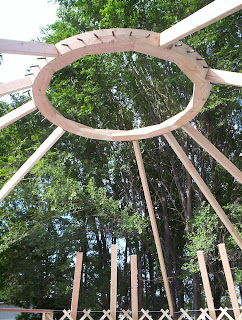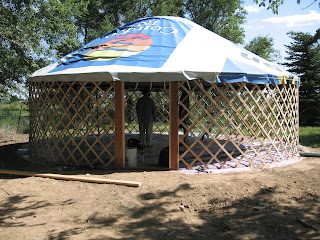The next question to consider once I decided on shelter and power was twofold: Where do I get water for bathing, cooking, and drinking and what do I do with it when I'm done? The first portion of that is relatively simple. I can get a used food-grade 50 gallon barrel for relatively cheap, so that will be my storage. But then what to do with wash water when I'm done?
That leads to another, more difficult question. What do I do with my, erm, gastric byproducts?
{disclaimer: from this point forward I will be discussing the composting of human excrement, that is to say, poop. There may be attempts at low-brow scatological humor. If this subject makes you uncomfortable, it's okay. I'm not extremely comfortable with it myself. Fecophobia is very common in western culture. Let's step right in, shall we?}My first thought was, ewww, I really don't want to be up to my elbows in... hard work trying to dispose of my wastes. I was hoping to find some magic solution to just make it go away; but as my old boss used to say, you can wish in one hand and... Oh, never mind. What I ended up learning was that there are only a few ways to have an off grid toilet.
The first one most of us are familiar with- the latrine. Just a hole in the ground that you do your business in. Smelly, cold in the winter, hot in the summer, and, as it turns out, horrible for the environment. Latrines don't actually treat the waste, they just wait for anaerobic decomposition to take place. In the meantime, pathogens are leaching into the surrounding soil and can travel up to 50 feet laterally. In addition, when it fills up, a new one needs to be dug or the old one scooped out. No thanks.
Another method is incineration. There are commercial toilets that use an electric element to incinerate your deposits. Periodically you remove a sort of dust from a tray below the toilet and discard that. This method works well, but requires an obscene amount of energy and can stink.
The third method is composting. I started looking at commercial composting toilets, and found that, while efficient and odorless, they cost around $2000 each. That's more than twice my yurt budget! I was starting to think I was up a creek and out of luck, but then I found The Humanure Handbook by Joseph Jenkins.

This self-published 250-page volume outlines a composting toilet system in which the actual composting takes place in an outdoor compost pile, and the toilet is simply a receptacle that gets emptied periodically. But that's not the interesting part of the book. Jenkins makes a carefully researched, well-supported case for large scale 'humanure' composting. He points out that all creatures in nature form a nutrient cycle with their environment and nothing leaves the system. He then contrasts that with our current nutrient cycle:

Interesting point, but what about smell and disease? Jenkins says that, done properly, this system has no odor and the composting temperature will kill all harmful pathogens to the point that the compost can be used to grow food. Cool.
Jenkins' book is available from Amazon or the publisher's website:
www.jenkinspublishing.com. The first edition of the book is available for free on the website.














 Then came running the support cable and building of the scaffolding for the roof ring.
Then came running the support cable and building of the scaffolding for the roof ring.





 The crew at the end of day 1.
The crew at the end of day 1. The cover went on super fast the next day!
The cover went on super fast the next day!



















